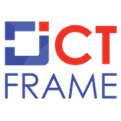19th June 2025, Kathmandu
In a monumental stride for artificial intelligence and the preservation of linguistic heritage, Sahaj Raj Malla has unveiled South Asia’s first quantum-powered AI model that accurately recognizes handwritten Devanagari digits with unprecedented precision.
South Asia’s 1st Quantum AI
This groundbreaking research, which sets a new global benchmark for regional script recognition, promises to revolutionize multilingual document digitization and cultural preservation efforts in Nepal and beyond.
Malla’s innovative system, detailed in his paper “Devanagari Digit Recognition using Quantum Machine Learning,” introduces a novel hybrid quantum-classical architecture. This sophisticated model seamlessly combines a conventional convolutional neural network (CNN) for efficient spatial feature extraction with a 10-qubit variational quantum circuit (VQC) designed for quantum-enhanced classification.
Rigorously trained and evaluated on the Devanagari Handwritten Character Dataset (DHCD), the quantum-classical hybrid model achieved a remarkable 99.80% test accuracy for quantum implementation, coupled with a test loss of 0.2893. Furthermore, it boasts an impressive average per-class F1-score of 0.9980. This represents a significant leap forward in a field where the complex structure of Devanagari and limited annotated datasets have historically posed substantial challenges to conventional AI models.
A key advantage of this breakthrough is its remarkable efficiency. Compared to equivalent classical CNNs, Malla’s quantum-powered model demonstrates superior accuracy while utilizing significantly fewer parameters and exhibiting enhanced robustness. By harnessing the unique principles of quantum mechanics, such as superposition and entanglement, this research not only propels the burgeoning field of quantum machine learning (QML) but also highlights its immense potential in real-world applications, particularly for low-resource language settings.
The implications of this technology for Nepal are vast. It holds the promise of vastly improving optical character recognition for ancient texts and official documents, developing more effective educational tools for Nepalese language learning, and enabling seamless digital processing of information written in the Devanagari script.
“Handwritten digit recognition in regional scripts, such as Devanagari, is crucial for multilingual document digitization, educational tools, and the preservation of cultural heritage,” stated Sahaj Raj Malla in his paper. This work directly addresses those critical needs, marking a pivotal moment in making diverse linguistic heritage more accessible in the digital age.
The full paper, comprising 9 pages and 4 figures, is available as an arXiv preprint (arXiv:2506.09069), with code available upon request. The initial version of the paper was submitted on June 8, 2025.
For more: South Asia’s 1st Quantum AI
